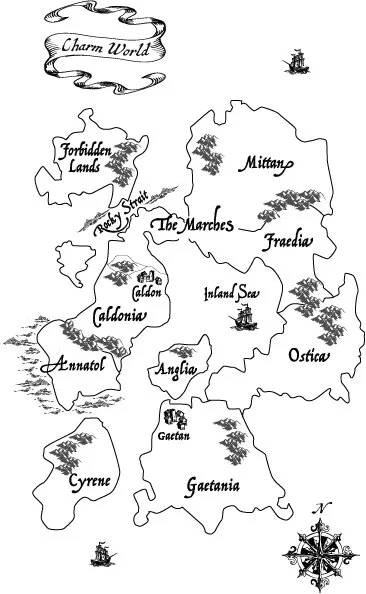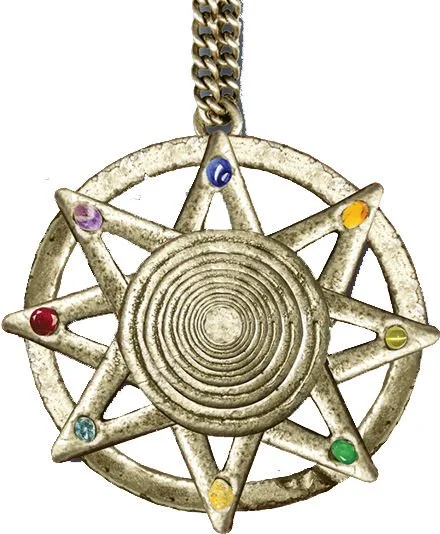The Inspiration for Charm Wars
Readers have asked me what inspired the idea for writing Charm Wars. The inspiration came when I thought of the book’s ending. (You’ll have to wait until the last book in the series to see what that was.) From the ending I worked my way backwards, figuring out how the refugees from Euloria in the Forbidden Lands crossed over the Rocky Strait to settle in a place they named Caldon in a country they called Caldonia.
Map of the World of Charm Wars
Next, I created a social structure for the society, one that would be a bit different from the societies in many of the novels I’ve read. I have an MA degree in Roman History, which I taught along with Medieval and Renaissance History. So it came as no surprise—to me, anyway—that I based Caldonian society on those three societies, plus with a bit of Native American Iroquois thrown in as well.
The eldest woman in a family is the matriarch, whose word is law. The husband lives with his wife’s family, and their children take the mother’s last name, not the father’s. If the couple split up, the kids stay with the mother and the ex-husband returns to his family. Everyday terms we are used to using, such as “husband and wife” and “man made,” are flipped around, becoming “wife and husband” and “woman made.”
The Naming Charm determines which kind of magic the potential mage can wield. If one of the gemstones lights up, the teen has the potential to use that kind of magic. If all but the blue gemstone at the top light up, the teen has the potential to become an archmage and can access all kinds of magic except the one represented by the blue gem. If all the gemstones, including the blue one, light up, that teen suffers a fatal accident during fledgling training.
Charms that contain spells for spell casting form the basis of the First and Lesser Families’ power. The refugees brought charms and staffs with them when they fled the Forbidden Lands to settle in Caldonia. Unfortunately, in their haste to flee and the limited number of ships and boats available, they couldn’t take all the charms and staffs with them. The shortage meant that the First and Lesser Families would have to steal them from their political opponents in “charm raids” if they wanted to become more powerful. Why not go to the Forbidden Lands and collect more charms and staffs? Actually, some people did venture there from time to time, but none of them ever returned. Except for one person: a mage named Rodleen Gespar. He came back as a “hollow mage”—a magic user who had all her personal energy sucked out of her by the magic plane and became an empty shell.
Map of the City of Caldon
I do admit, though, that part of the Caldon’s social structure is a common trope. Society is divided into two classes: noblesse and commoners. The first and lesser noblesse families control the charms and staffs brought from the Forbidden Lands, which form the basis of their power. If commoners have magic abilities, they can become mages but must serve a First or Lesser Family to use that magic. If they don’t serve the families, they’re conscripted to serve in the Legions in Caldon’s centuries-old war against their archenemy Gaetan in the east and also against Annatol in the west, across the Sharp Teeth Mountains.
Because of the charm raids, noblesse live in fortresses-like compounds similar to the ones powerful families inhabited during the Middle Ages. Armed “protectors” patrol the wall walks and “backwatchers” accompany family members whenever they venture outside their compound. Most commoners live in tenements, although some live in houses. They become clients of noblesse families, seeking protection and handouts in return for their allegiance to the family and their vote in the elections.
So welcome to the world of Charm Wars, where “the men receive the honors, but the women have the power.”
For sneak peek of Charm Wars and for more information about Caldonian society, see https://www.danlutts.com.
To purchase the book on Amazon, go to:
https://bit.ly/CharmWarsKindle


